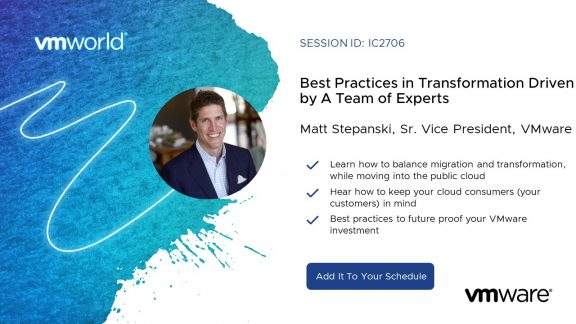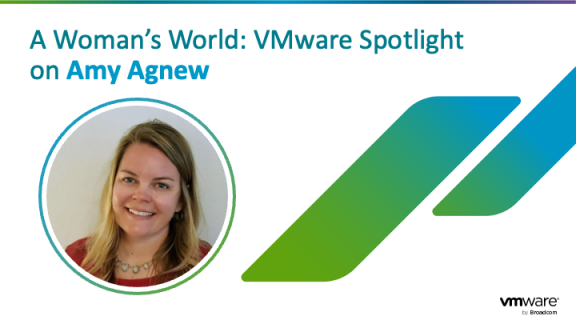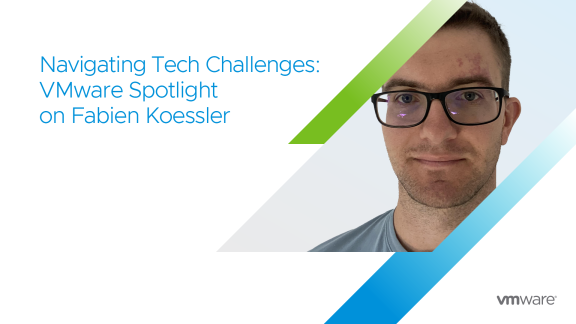VMworld challenges customers and partners to innovate and discover new solutions. It is our yearly opportunity to remind ourselves of the innovation that is happening all around us and inspires us to push ideas forward to make them reality.
VMworld 2021 was no exception. The theme this year was “imagine that,” a reference to the breadth of transformational opportunities that VMware products provide, especially when leveraging multi-cloud strategies.
At VMware Professional Services, we have the privilege every day to help customers explore the art of the possible with our products and technologies. During my keynote “Best Practices in Transformation Driven by a Team of Experts,” I had the opportunity to discuss examples with the consultants who are helping some of our largest customers achieve their cloud and application transformations. Here is some of the advice we shared.
The VMware Application and Cloud Modernization Framework, discussed in detail in this blog series, explains how organizations can successfully engage in multi-cloud modernization efforts. Here’s a look at some of the expert-driven best practices behind this framework:
1. Introduce a top-down mandate. A top-down modernization mandate drives a successful cloud transformation within an organization. Successful migrations require total alignment by everyone. Whether the mandate comes from the CEO or CIO, it’s absolutely crucial that leadership introduce common goals that permeate the entire organization. Enable them to provide strong vocal and visible executive support. Your sponsors should be able to articulate the vision and offer support when cross-departmental challenges arise.
2. Use an outcome-focused approach with clear KPIs. KPIs are critical to multi-cloud modernization efforts. The figure below provides several examples. Begin by identifying desired business outcomes and the KPIs that will measure progress against them. Use indicators that tie back to business outcomes, such as infrastructure and application performance before, during, and after application migrations. Another great cloud metric to include is the percentage of workloads running on demand. Of course, no set of KPIs would be complete without a measurement of the customer experience, like NPS, before, during and after modernization.
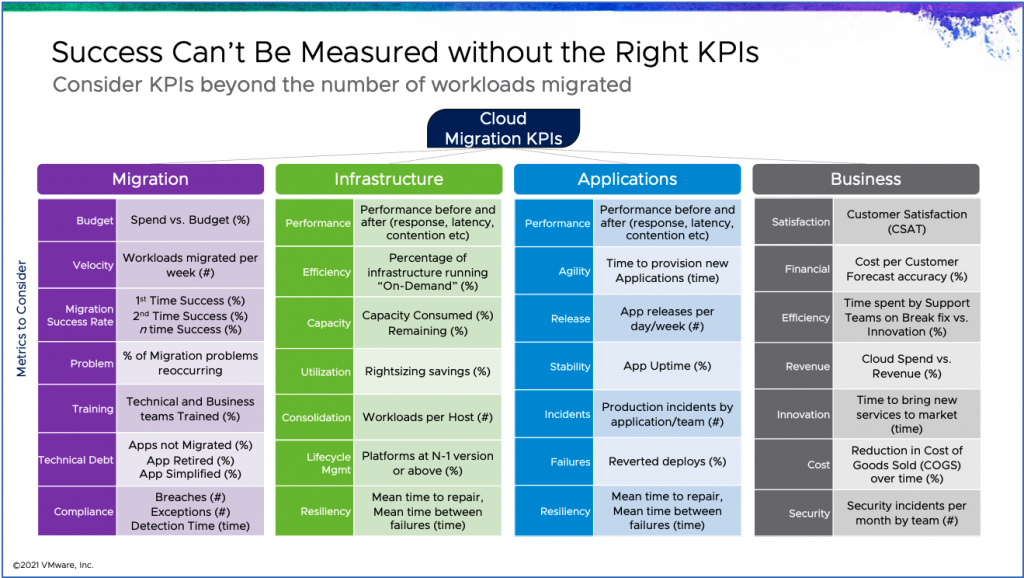
3. Take a balanced approach to modernization and transformation. Many customers ask when they should facilitate their transformation and whether it should occur before, during, or after cloud migrations. The simple answer is that companies must find balance between the two initiatives. One successful approach is to set up a rehost/relocate factory. “Factory” in this context refers to a team dedicated to migrating workloads to the cloud. This team performs technical and business validation testing during the migration process. Along with establishing the factory, organizations should industrialize the migration process with automation. If teams can transform processes, such as system patching and firewall upgrades with automation without impacting migration velocity, this is a terrific benefit. Finally, this balancing act requires separating infrastructure modernization from application modernization, while also using infrastructure modernization to accelerate application modernization.
4. Focus on the needs of your customer when designing your services. You must build the services that internal customers, such as developers, actually want, and will use. Involve them in the process early. Focus on the organizational goals and business outcomes the cloud will drive, such as rapid deployment of applications in the cloud. Involve both operators and end users to validate operational processes and consumption patterns early. Meet with the operations team and your target customers early in the transformation process. Opening a dialogue from day one will help validate assumptions and eventually scale the service capabilities. Once your cloud is operational, focus on service consumption. Help end users utilize the platform. Ensure they have the right training and documentation. Initially, provide high touch engagement to help drive high consumption of the services.
Successful multi-cloud transformations require an evolution into a service platform. There is a lot that goes into it. Watch the full session to truly appreciate the details. In parting, I’ll leave you with some additional advice for your multi-cloud transformation.
- Don’t wait to engage. Keep end customers at the heart of your cloud project. Meet with the operations team and the target customer early in the transformation process. Opening a dialogue from day one will help validate assumptions and eventually scale the service capabilities.
- Prepare to demonstrate progress early in the process. By identifying benchmarks early, it becomes easier to validate the given process and incorporate customer feedback.
I hope you’ll join VMworld attendees by watching the entirety of our solution keynote on cloud migration strategies and best practices. I’ve outlined the most salient points here, but there are so many additional details and experience-driven recommendations from experts that were simply too much to fit into one summary.
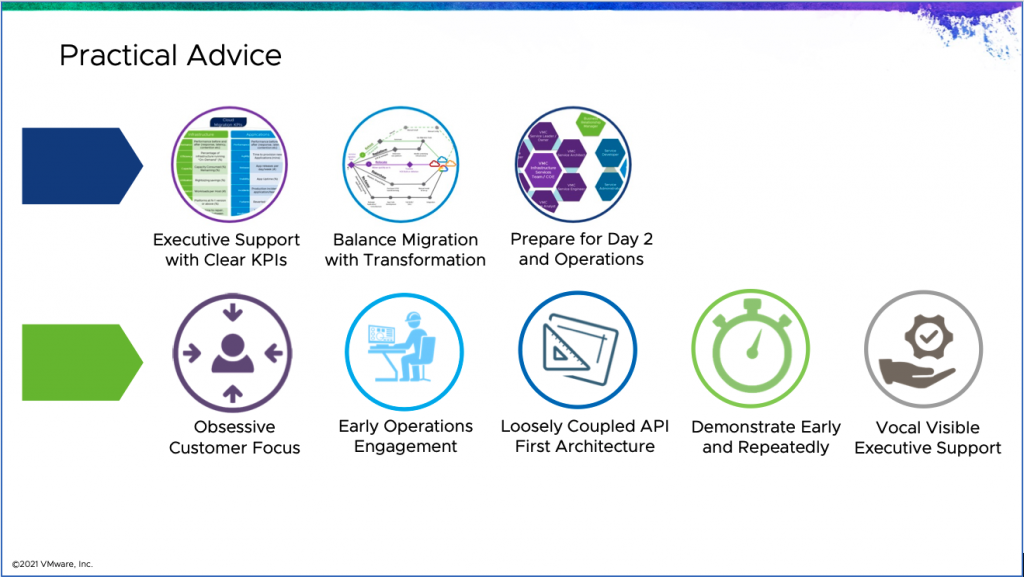
Our professional services business is eager to help propel your multi-cloud transformation forward. Learn more about our team and offerings.
